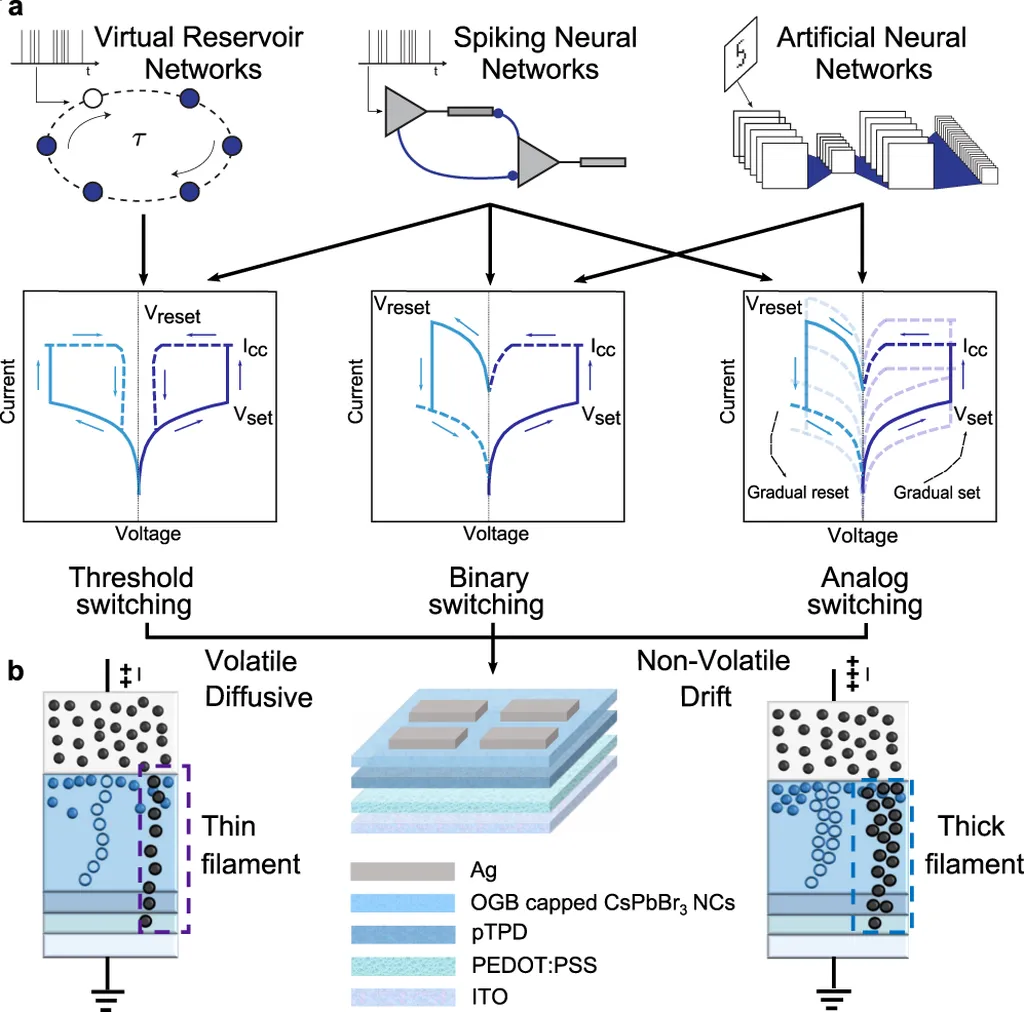In the heart of China, researchers are unlocking the potential of a material that could revolutionize the way we process information and harness energy. Xiaohan Zhang, a leading scientist from the Key Laboratory of Advanced Structural Materials at Changchun University of Technology, is at the forefront of this exciting development. His team’s recent review, published in the journal *Information & Functional Materials* (translated from Chinese as *信息与功能材料*), is shedding light on the promising future of halide perovskite memristors for optoelectronic applications.
Memristors, or memory resistors, are electronic components that can remember the amount of charge that has passed through them, even after the power is turned off. They are considered the building blocks for next-generation memory and computing technologies. Halide perovskites, a class of materials known for their exceptional properties in solar cells, are now being explored for their potential in memristor technology.
Zhang and his team have concisely summarized the recent developments in halide perovskite memristors, highlighting their advancements in optoelectronic applications. These include light-induced low power switches, optoelectronic logic operations, and even optoelectronic neuromorphic computation, which mimics the way the human brain processes information.
“The potential of halide perovskites in memristor technology is immense,” Zhang explains. “They offer a unique combination of properties that could lead to more efficient, flexible, and cost-effective optoelectronic devices.”
One of the most exciting aspects of this research is its potential impact on the energy sector. Optoelectronic devices that can process information using light instead of electricity could lead to significant energy savings. This is particularly relevant in the context of data centers, which are known for their high energy consumption.
Moreover, the development of artificial vision systems based on halide perovskite memristors could revolutionize fields such as surveillance, autonomous vehicles, and robotics. These systems could enable machines to process and interpret visual information more efficiently, leading to faster and more accurate decision-making.
However, the journey is not without its challenges. Zhang and his team have also addressed the hurdles that need to be overcome, such as improving the stability and scalability of halide perovskite memristors. But the future prospects are promising, and the potential applications are vast.
As we stand on the brink of a new era in computing and memory technologies, the work of Zhang and his team serves as a beacon of inspiration. Their research is not just about pushing the boundaries of science; it’s about shaping the future of technology and its impact on our lives. And in the words of Zhang, “The best is yet to come.”

